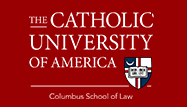Document Type
Article
Publication Date
2025
Abstract
The Antiquities Act empowers the President both to declare national monuments and to reserve the “smallest area” of land compatible with the preservation of such monuments. Modern Presidents have adopted expansive interpretations of those authorities—purporting, for example, to reserve entire “ecosystems” as national monuments, and to claim that the Act’s reference to “land” includes state-sized swaths of the ocean floor. Until recently, Presidents’ expansive readings of the Act have gone largely unchecked by courts. But in Massachusetts Lobstermen’s Ass’n v. Raimondo, Chief Justice Roberts expressed interest in reconsidering “[t]he scope of the objects that can be designated under the [Antiquities] Act, and how to measure the area necessary for their proper care and management.” This Essay will respond to the Chief Justice’s expression of interest by proposing how courts should review presidential declarations made pursuant to the Antiquities Act.
In short, interpretations of the Antiquities Act should be brought into the modern age of statutory interpretation—an age dominated by the rise of textualism and widespread applications of the major questions doctrine. Interpreting the Act’s provisions from the perspective of the ordinary reader (as textualists do), and asking whether the Act “clearly” gives the President “major” authority (as the major questions doctrine requires), would remedy the Chief Justice’s concern that the Act “has been transformed into a power without any discernible limit.”
Recommended Citation
Squitieri, Chad, "Bringing the Antiquities Act Into the Modern Age" (2025). Scholarly Articles. 1190.
https://scholarship.law.edu/scholar/1190

